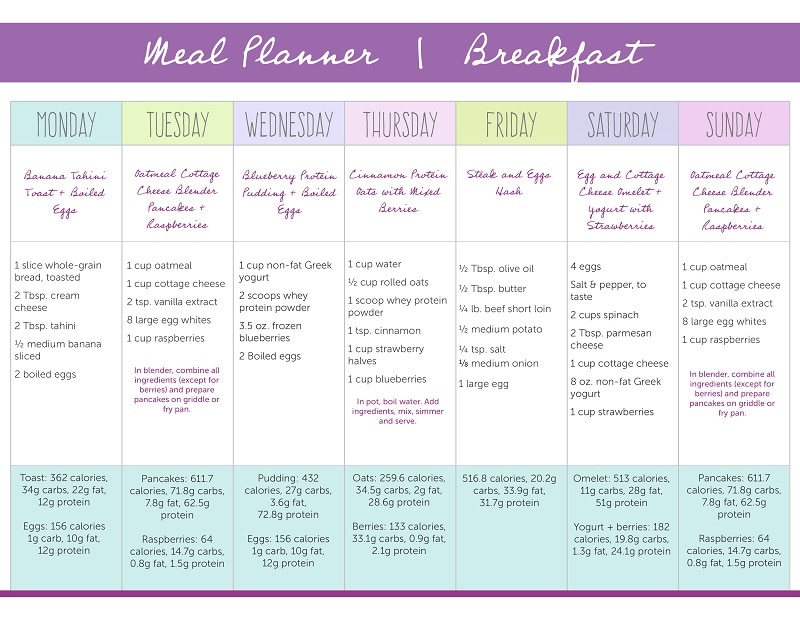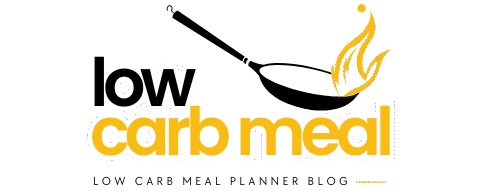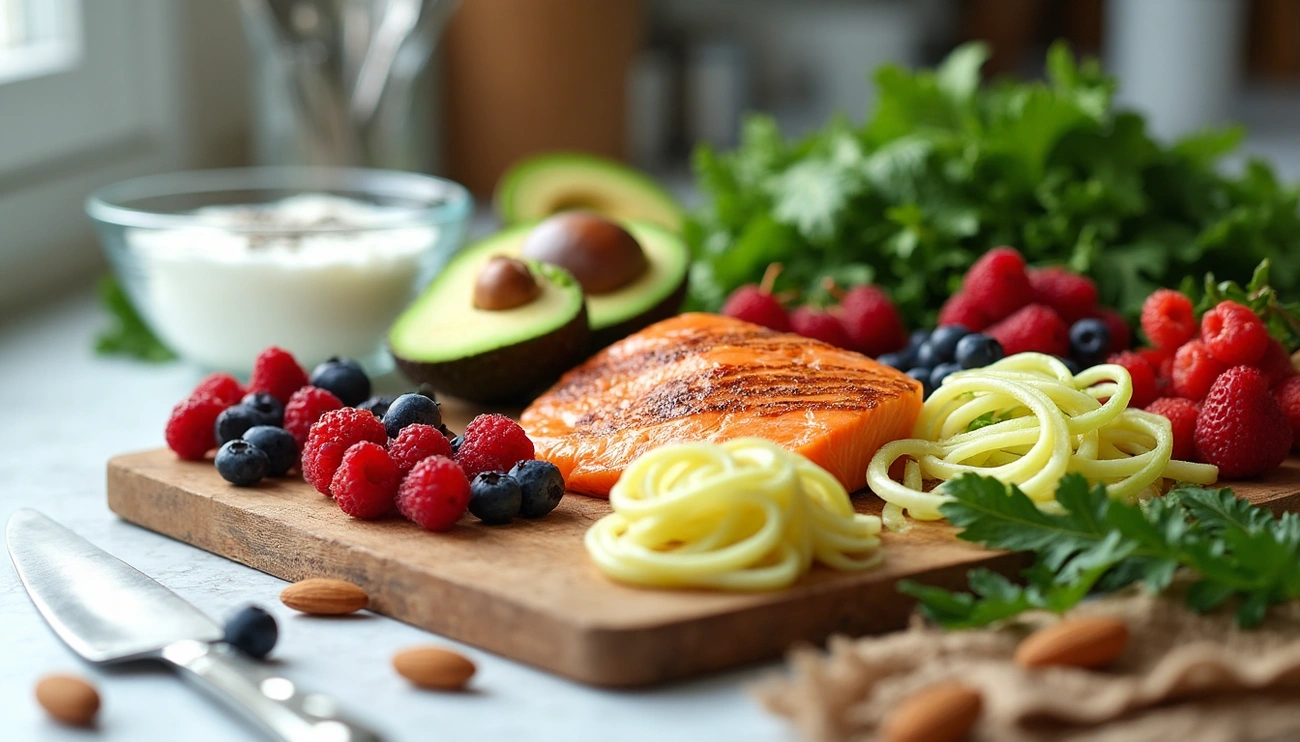Low carb works for weight loss. That’s clear.
The problem? Too many people cut carbs completely. You miss important stuff like fiber from whole grains and legumes. Not smart.
Better approach: balance. Most good low carb plans stay under 100g carbs on 2,000 calories daily. Research backs this for weight loss and diabetes control.
This 7-day plan keeps it simple. Budget-friendly recipes. Complete shopping list. Meals that cut carbs but keep the nutrition your body needs.
No fancy ingredients. No breaking the bank. Just practical eating that works.
Here’s your week-long guide to affordable low carb meals.
What Makes a Low Carb Diet Effective

Image Source: Vitacost
Low carb isn’t just about cutting calories. There’s real science here.
How low carb helps with weight loss
Cut carbs, insulin drops. Lower insulin means your body can actually use stored fat for energy. Simple.
The numbers are impressive. Very low-carb diets boost energy expenditure by about 151 calories daily compared to high-carb eating. Every 10% carb reduction adds another 52 calories burned per day. You’re literally burning more calories without extra exercise.
Hunger changes too. Many people feel less hungry on low carb because of:
- Ketosis (your body making ketones from fat)
- Lower ghrelin (hunger hormone)
- Better leptin and cholecystokinin levels
You eat less without feeling deprived. Plus, low carb targets belly fat – the dangerous stuff around your organs.
Balancing protein, fat, and fiber
What you eat matters more than what you avoid.
Protein keeps you full and preserves muscle. When you drop carbs, protein naturally goes up as you swap bread for meat, fish, eggs. Higher protein cuts appetite, boosts metabolism, maintains muscle that burns calories 24/7.
I’d aim for 1.2 to 2 grams protein per kilogram body weight if you’re active.
Fat quality counts. Vegetable fats and proteins cut heart disease risk by 30% compared to high-carb diets. Animal fats didn’t show the same benefit. Stick with avocados, nuts, seeds, olive oil alongside your protein.
Fiber still matters. Low-glycemic, high-fiber foods improve weight loss, blood sugar, and blood pressure. Non-starchy vegetables give you vitamins and minerals without the carb hit.
Common mistakes to avoid
People mess this up in predictable ways.
First mistake: skipping water. Low carb makes you hold less water, so dehydration happens fast. Men need about 15.5 cups daily, women need 11.5 cups.
Second mistake: forgetting vegetables. Some people feel awful on low carb because they’re not eating enough produce. Half your plate should be vegetables every meal.
“Carb creep” gets everyone. You add “just a little” bread back, then more sugar, and suddenly cravings return.
Exercise still matters. Some think cutting carbs means skipping workouts. Wrong. You need both.
Don’t live on bacon. Fat is important, but variety matters. Mix healthy fats with lean proteins for complete nutrition.
Day 1: Kickstart with Simple Swaps
Image Source: Centr
Simple swaps make all the difference. Day 1 focuses on easy ingredient switches that cut carbs without killing flavor.
Breakfast: Egg in a hole with avocado
Skip the bread. Use avocado instead.
Cut an avocado in half, remove the pit. Scoop out a bit more to make room for your egg. Crack the egg into each half, season with salt and pepper. Bake at 425°F for 15-20 minutes.
I add Parmesan cheese and fresh herbs. Makes it taste way better.
The avocado gives you heart-healthy fats instead of empty carbs. Eggs provide quality protein for muscle maintenance. Simple switch, big nutritional upgrade.
Lunch: Salmon-stuffed avocado
Another avocado meal, but totally different. No cooking required.
Mix together:
- ½ cup nonfat Greek yogurt
- ½ cup diced celery
- 2 tablespoons chopped parsley
- 1 tablespoon lime juice
- 2 teaspoons mayo
- 1 teaspoon Dijon mustard
- Salt and pepper
- 2 cans salmon, drained
Stuff this mixture into halved avocados. 465 calories per serving with only 6.9g net carbs. Plus 27.1g protein and 34.4g healthy fats.
Salmon delivers omega-3s, vitamin D, B12, potassium, and selenium. Combined with avocado, you get complete nutrition in one meal.
Dinner: Cauliflower gnocchi with salad
Regular gnocchi has about 48g carbs per cup. This version? Only 4g net carbs.
Rice the cauliflower, squeeze it completely dry. Mix with parmesan, eggs, coconut flour, and seasonings in a food processor. Shape into small pieces, press with a fork for ridges. Freeze for at least an hour.
Pan-fry in olive oil with garlic for exactly two minutes. Don’t overcook or you’ll get mush.
Serve with a green salad. The cauliflower provides 87% of your daily vitamin C.
You’ve replaced bread with avocado, regular pasta with cauliflower, and loaded up on protein-rich salmon and eggs. Carbs are down, nutrition is up.
Day 2: High Protein, Low Carb Comforts
Day 2 focuses on protein. Comfort food that still works for weight loss.
Breakfast: Banana oat muffins with yogurt
Flourless banana oat muffins. No added sugar – just ripe bananas for sweetness.
Mix it up:
- 2 very ripe bananas
- 1 cup nonfat Greek yogurt
- 2 eggs
- 2 cups gluten-free rolled oats
- 1½ teaspoons baking powder
- ½ teaspoon baking soda
- ½ teaspoon vanilla extract
Blend everything. Bake at 400°F for 15 minutes. Each muffin has 135 calories and 4.4g protein. Add extra Greek yogurt for more protein.
These keep 10 days in the fridge, 60 days frozen. Perfect for meal prep.
Lunch: Chicken satay bowl
This bowl delivers. 35g protein, only 460 calories. Tender chicken with peanut sauce and vegetables.
The balance works – savory soy sauce, sweet peanut butter. High-protein meals control hunger better than low-fat diets.
I aim for 25-30g protein per meal for best results. This bowl hits that target. Tastes good hot or cold, so meal prep works for 4-5 days.
Dinner: Shrimp scampi with zoodles
Classic comfort food, low carb style. Zucchini noodles instead of pasta.
Simple steps:
- Heat butter and olive oil
- Add garlic until fragrant
- Cook shrimp until pink
- Add broth, lemon juice, zest
- Toss with zoodles until warmed
The garlic-lemon sauce coats everything perfectly. Traditional recipe, adapted smart.
Protein throughout the day keeps you satisfied. Your body uses about 25-30g protein per meal effectively. Spreading intake works better than loading it all at once.
Day 2 proves comfort food can support weight loss. No deprivation needed.
Day 3: Filling Meals with Fiber and Flavor
Fiber matters on low carb. People think you can’t get enough. Wrong.
Day 3 proves it. Good fiber, great flavor, low carbs.
Breakfast: Greek yogurt with berries
Greek yogurt with berries works well. Full-fat Greek yogurt gives you 15.3g protein per 3/4 cup. Good start.
I add heavy cream. Makes it richer:
- 4 tablespoons heavy cream to 3/4 cup Greek yogurt
- Mix well
- Top with 1 ounce frozen berries
Results: 8.7g net carbs, 30g fats, 17.3g protein.
Berries pack fiber. Blackberries have 7g per cup. Raspberries even better – 9g fiber per cup. Sweet deal.
Lunch: Pork paprikash with cauliflower rice
Hungarian comfort food, low carb style. I love this dish.
For the pork:
- Brown pork pieces with onions
- Add paprika, tomatoes, broth, banana peppers
- Simmer 9-11 minutes
- Finish with sour cream mixture
Cauliflower rice is simple. Process florets until rice-sized. Sauté 8-10 minutes until golden.
This meal delivers: 31g protein, 11g fiber. That’s 39% of daily fiber needs. Plus 26% vitamin A, 88% vitamin C.
Only 319 calories. Just 13g net carbs from 24g total carbs. Filling without the carb load.
Dinner: Roasted green beans and lean meat
Keep dinner simple. Green beans with lean protein.
I steam green beans 5 minutes. Ice water bath keeps them crisp. Then sauté with garlic and sliced almonds.
Season chicken with garlic powder, onion powder, cumin, rosemary. Basic but good.
Green beans are carb-friendly. About 2-3g net carbs per cup. You can eat plenty.
Day 3 shows fiber doesn’t require high carbs. Research backs this – 30g fiber daily helps weight loss. Berries, cauliflower, green beans all work.
Day 4: Omega-3s and Plant-Based Power
Image Source: EatingWell
Omega-3s matter for your brain. Day 4 adds these healthy fats without the carbs.
Breakfast: Chia yogurt bowl
Chia seeds pack omega-3s. They’re one of the top plant sources alongside walnuts and flax.
Make it simple:
- 3 tablespoons chia seeds
- 1 cup unsweetened almond milk
- Low-carb sweetener and vanilla
- Mix and refrigerate overnight
- Stir in Greek yogurt for protein
Zero net carbs from chia seeds. They have 4g carbs and 4g fiber per tablespoon. The Greek yogurt adds protein.
Try chocolate (add cocoa powder) or coconut lime (use coconut milk instead).
Lunch: Edamame and berry snack plate
No-cook lunch. Perfect for busy days.
Edamame gives you complete protein with all nine essential amino acids. Add vitamins C and K, folate, iron, and calcium.
Simple plate:
- 1/2 cup edamame (6.9g carbs per 78g serving)
- 1/2 cup mixed berries
- 2-3 cheese slices
- Handful of nuts if you want
Berries are nutrient-dense. Low carb count but high in fiber, vitamin C, and anthocyanins.
Dinner: Roasted salmon with chickpeas and kale
Salmon delivers omega-3s EPA and DHA for heart and brain health.
Easy prep:
- Preheat oven to 425°F
- Season chickpeas with paprika, salt, oil
- Roast chickpeas 30 minutes
- Sauté kale with garlic until tender
- Add salmon to oven for final 5-8 minutes
Each serving: 447 calories, 37g protein, 22g fat, 23g total carbs (17g net carbs after 6g fiber). That’s 74% of your daily protein plus lots of vitamins A and C.
Eat fatty fish twice weekly. Research shows omega-3s help reduce heart disease risk, fight inflammation, and may help with depression.
Save extra salmon for tomorrow’s lunch.
Day 5: Vegetarian-Friendly Low Carb Meals
Vegetarian low carb works. You just need smart ingredient choices.
Breakfast: Broccoli egg burrito
Skip the tortilla. Use eggs as your wrapper instead.
Cook chopped broccoli until soft (about 3 minutes). Add tomatoes and set aside. Whisk egg with milk, scallion, salt and pepper. Cook the egg mixture undisturbed until set (about 2 minutes). Flip carefully, add cheese, and cook one minute more. Fill with the broccoli mixture and roll up.
This gives you 15g of protein with just 10g of carbs per serving. The entire “burrito” provides 259 calories with impressive amounts of vitamins A (42% DV) and C (61% DV).
It’s filling. It’s nutritious.
Lunch: Hummus and veggie sticks
Simple lunch that requires minimal prep. I like this for busy days.
For this lunch, prepare:
- 50g red bell pepper, cut into strips
- 50g celery sticks
- 100g carrot sticks
- 150g homemade hummus (or 75g store-bought)
Make your own hummus if you can. Store-bought versions typically contain more fat. This combination delivers 16g of protein and 27g of carbs. The entire meal provides 271 calories with substantial calcium and protein.
Crunchy. Satisfying. Done.
Dinner: Spaghetti squash with sun-dried tomatoes
Pasta alternative that doesn’t disappoint. Way fewer carbs than regular pasta.
Bake a halved spaghetti squash until tender (about an hour). Sauté shallots and garlic until golden. Add basil leaves and sun-dried tomatoes. Toss with the cooked spaghetti squash strands. Season with salt, pepper, and crushed red pepper. Top with parmesan just before serving.
Each serving contains approximately 204 calories with just 22g of carbohydrates, including 4g of fiber. For extra flavor, I add goat cheese. It melts beautifully into the warm dish.
Day 5 proves vegetarian and low-carb can work together. No compromises needed.
Day 6: Smart Snacking and Satisfying Wraps
Day 6 keeps it simple. Quick options that work when you’re busy but still keep carbs down.
Breakfast: Yogurt with chia and honey
Greek yogurt with chia seeds. Solid choice for busy mornings. This combo gives you 36 grams of protein per serving. The chia seeds add omega-3s and fiber without the carb load.
Here’s how I make it:
- Mix Greek yogurt with chia seeds (¼ cup chia to 1 cup yogurt)
- Add honey for sweetness
- Let it sit in the fridge 2-3 hours or overnight
Stir it after 30 minutes to stop clumping. Keeps for 5 days in the fridge, perfect for meal prep.
Lunch: Taco lettuce wraps
Taco Tuesday without the tortilla. Takes 30 minutes and hits the spot.
I brown ground beef with onion and garlic. Add taco seasoning, water, and salsa. Let it simmer until thick. Spoon into iceberg or butter lettuce leaves.
Top with cheese, avocado, salsa, whatever you like. I use ground turkey sometimes for less fat. Good protein, no tortilla carbs.
Dinner: Pineapple avocado salad
Light dinner that actually satisfies. Fresh pineapple chunks, avocado slices, red onion rings. I soak the onion in ice water first – cuts the bite. Add cucumber if you want crunch. Dress with lime juice and olive oil.
186 calories per serving. 13g fat, 20g carbs, 5g fiber. Gives you 67% of daily vitamin C plus healthy fats from avocado.
Day 6 done. Simple meals that keep you on track.
Day 7: End Strong with Balanced Meals
Final day. Time to bring it all together.
These meals wrap up your week right. Balanced nutrition, carbs still in check.
Breakfast: Spring green frittata
Simple egg dish packed with greens. Just 7g carbs and 18g protein per serving.
Here’s how:
- Sauté asparagus and green onions until tender
- Add spinach and garlic, cook until wilted
- Pour beaten eggs with milk and seasonings
- Top with Parmesan, broil until set
Only 214 calories but gives you 37% daily vitamin A and 14% vitamin C. I’d add broccoli or bell peppers. Goat cheese works great too.
Lunch: Leftover taco wraps with fruit
Use yesterday’s taco meat. Smart planning.
These stay fresh 24 hours without getting soggy. Just warm the meat, fill lettuce leaves, add toppings. I use Greek yogurt instead of sour cream.
Pair with berries or citrus. Low carb fruits work best.
Can make pinwheels with low-carb tortillas. Lettuce wraps have fewer carbs though.
Dinner: Zucchini lasagna with whole grain bread
Comfort food that fits the plan. 15g carbs, 30g protein per serving.
The process:
- Slice zucchini thin, roast to remove moisture
- Layer with seasoned ground beef, marinara, ricotta
- Top with mozzarella and Parmesan
- Bake until golden
424 calories with 3g fiber. I add a small piece of whole grain bread for extra fiber. Freezes well too.
Week complete. You’ve proven low carb can be satisfying without restrictions.
Conclusion
Seven days done. Nice work.
Low carb doesn’t need fancy ingredients or big budgets. Simple swaps work. Cauliflower rice instead of regular rice. Zucchini noodles instead of pasta. Lettuce wraps instead of tortillas.
The key? Balance over restriction. Protein, healthy fats, and fiber-filled vegetables keep you full. They support your goals without the deprivation.
Mix and match these recipes based on what you have. What’s in your pantry. What you actually like eating. You’ll find favorites that work for both your health and your wallet.
Energy levels stabilize after a few days. Cravings drop. Most people feel satisfied with smaller portions. Fewer hunger spikes throughout the day.
Want to continue? Repeat the meals you enjoyed. Try new low carb recipes using the same principles. Focus on nutrition, not restriction.
This plan proves affordable low carb eating works. Simple ingredients. Practical meals. No breaking the bank required.
Your journey starts here.
FAQs
Q1. What are some easy low-carb swaps I can make in my diet?
Some simple low-carb swaps include using cauliflower rice instead of regular rice, zucchini noodles in place of pasta, lettuce wraps instead of tortillas, and avocado as a bread substitute for dishes like egg-in-a-hole. These swaps can significantly reduce carb intake while maintaining flavor and satisfaction.
Q2. How can I ensure I’m getting enough fiber on a low-carb diet?
Focus on incorporating non-starchy vegetables like broccoli, cauliflower, and leafy greens into your meals. Berries, chia seeds, and flaxseeds are also excellent low-carb sources of fiber. Aim for a variety of these foods to meet your daily fiber needs while keeping carbs in check.
Q3. Is it possible to follow a low-carb diet as a vegetarian?
Yes, it’s possible to follow a low-carb diet as a vegetarian. Focus on protein sources like eggs, Greek yogurt, cheese, and plant-based proteins such as tofu and tempeh. Incorporate plenty of low-carb vegetables, nuts, and seeds to ensure a balanced diet while keeping carbohydrates low.
Q4. How can I make my low-carb meals more budget-friendly?
Plan your meals in advance, buy seasonal produce, and opt for frozen vegetables when fresh options are expensive. Utilize cheaper protein sources like eggs and canned fish. Batch cooking and using leftovers creatively can also help stretch your budget while maintaining a low-carb diet.
Q5. What are some quick and easy low-carb snack ideas?
Some quick low-carb snacks include hard-boiled eggs, cheese sticks, a handful of nuts, celery with peanut butter, cucumber slices with hummus, or a small serving of Greek yogurt with berries. These options provide protein and healthy fats to keep you satisfied between meals while keeping carbs low.
Show facts

